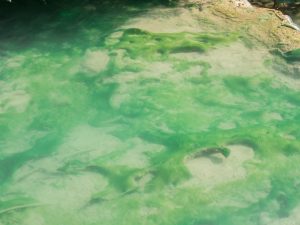This KS3 scheme of work contains resources for 8 lessons. All of the necessary files (Powerpoint slides, Handouts etc) are available as downloads. Links are provided to relevant online videos (these are external sources which may be updated or removed over time). The student pages of this website contain online examples of activities from the scheme of work that can be printed and used in the classroom.

Lesson A: The Ocean Conveyor Belt
In this lesson students will map the largest oceans and seas in the world, and investigate what rubber ducks can ...

Lesson B: Shark Attack
In this lesson students look at some of the adaptations of sharks and plan their own practical based around Diffusion to ...

Lesson C: Floating and Sinking
In this lesson students will use their own practical results, the concept of Density and the Archimedes principle to investigate ...

Lesson D: Mysteries of the Deep
In this lesson students will use the example of scuba diving to investigate how water Pressure increases with Depth and ...

Lesson E: Plankton Police
A body has been washed ashore. How can the police decide if the victim was drowned or if the body was ...

Lesson F: Blooming Algae
In this lesson students will learn about the process and causes of Eutrophication and algal blooms. Using algal samples from ...

Lesson G: March of the Polar Bears
This lesson covers the adaptations of Polar Bears to their environment and the threats they face as a result of ...

Lesson H: Oil trap
During this lesson students will consider the importance of clean water by comparing the Sediment samples from the two grab ...
You can use these resources with your pupils to assess their understanding of the materials covered in the scheme of work.
Oceans Deep pupil understanding checklist
Oceans Deep – End of unit test skill section
Oceans Deep – End of unit multiple choice (which students can do at home on the Just for Fun page)
